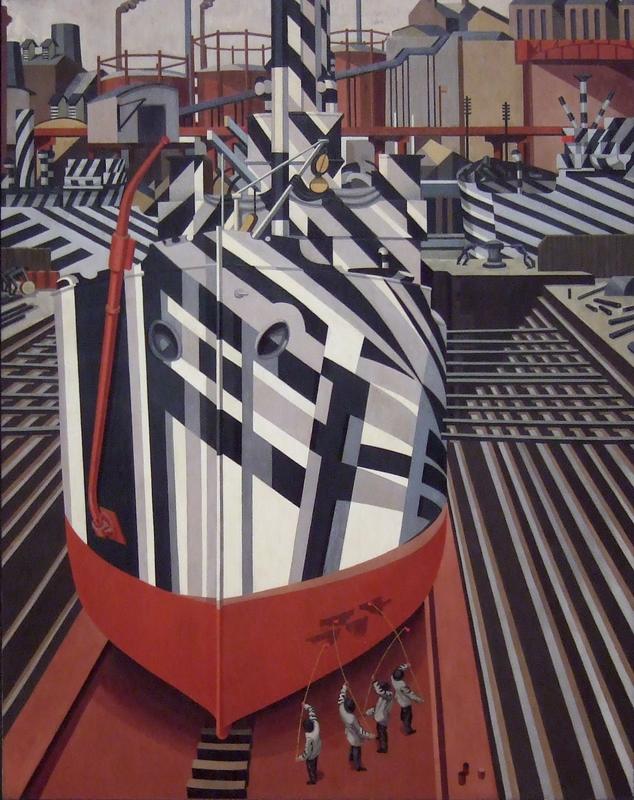"Give 'em the old razzle dazzle" took on a whole new meaning in World War I.
At the start of the 20th century, just before the war, a man named Norman Wilkinson convinced the English navy to take ship camouflage to the next level. Rather than aim for invisibility, he sought to confuse the opposing armies to greatly hinder their ability to aim and hit the ships.
To convince the English navy to give dazzle camouflage a try, Wilkinson made a model dazzle ship and challenged King George V to predict it’s direction. When the king failed to do so correctly, he grew agitated. Wilkinson presented the same challenge to a high ranking official in the English Navy who then also failed the challenge. The official responded with “How the hell do you expect me to predict the course of a ***** thing all painted up like that?”, successfully proving Wilkinson’s point.
Our artist Wadsworth wasn’t involved in the conception of dazzle camouflage, but has since become one of the most recognizable names associated with the project. This painting in particular, his first after the war ended, saw a great surge in popularity for the artist. Wadsworth worked as one of the camoufleurs tasked with designing and painting the geometric patterns for English naval ships. When the ships docked, as portrayed here in the painting, they caught the attention of all those around, dazzling them as it were.
The idea behind dazzle camouflage was to use conflicting geometric shapes and vertical lines of black and white to make the path of the ship indecipherable to enemy attackers. If an opposing submarine couldn’t determine where the ship was headed, they couldn’t correctly target their torpedoes and the beautiful ships would sail on unharmed.
Overall, the dazzle camouflage project was deemed a success — especially in the eyes of the public. However, research conducted in the years following the war argue that its supposed success may be attributed to other developments in the English navy. Nonetheless, the idea of dazzle camouflage fascinated the public at the time. So when statistics were released that showed ship sinkings had decreased since the ships were bedazzled, the press ran with it. Dazzle camouflage became so popular that it made its way into fashion, with fabrics recreating the same patterns. The resulting popularity led Picasso to boast that dazzle camouflage was inspired by the cubist movement.
While the ship sinkings had decreased, reports comparing how often the ships with dazzle camouflage and the ships without were hit or sunk showed the difference was minimal. There wasn’t much to support that dazzle camouflage worked as intended or as well as the press claimed. But, it was said that the morale of the crews on the dazzle ships was much higher than those without because they felt so confident in the project and the protection the paint gave them.
Dazzle camouflage inspired further camouflage development in World War II, with artists such as Ellsworth Kelly participating as camoufleurs. His painting Cité in particular feels like it could have adorned a pretty awesome dazzle ship.
















I like this piece because the lines are crisp and the colors are vibrant. The eye is drawn to each part of the picture which is really cool. There are many details within this piece that add depth and texture too.